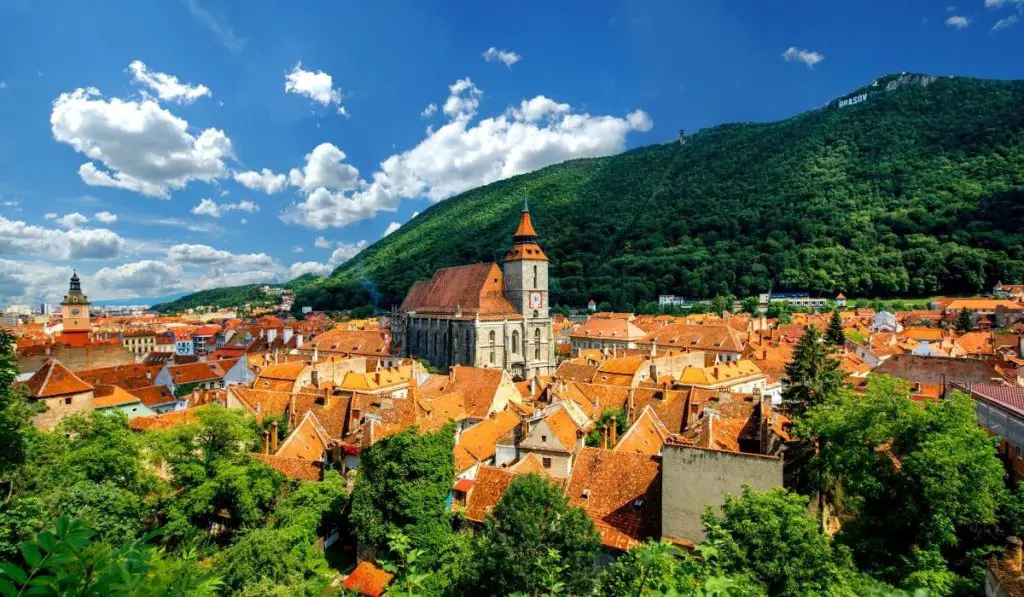This post may contain affiliate links. At no cost to you, purchases made through these links may result in a small commission for Traveling Transylvania. We never recommend products that we don’t know and trust. Thank you for your continued support!
If you’ve stumbled across this page, I can only assume you’ve decided to take the plunge and travel to Transylvania! Congratulations. Start preparing yourself now for a land unlike any you’ve ever seen before.
Transylvania, Romania is one of the most unique and beautiful regions in the world. From the hearty traditional food, to the expansive mountain ranges in the region, to the hospitality of its people, Transylvania will feed your soul and make you feel as though you’re home.
Although I’m not from Transylvania, I’ve lived here for the past few years and compiled this list of helpful information for first timers’ visit to the Transylvania region (from an American perspective). It’s one of the most beautiful historical regions in Eastern Europe, with its medieval towns, magnificent castles, and stunning Carpathian Mountains. Bine ati venit to the land beyond the forest.
- Where is Transylvania?
- How to Get to Transylvania
- Best Time to Visit Transylvania
- Language in Transylvania
- Currency in Transylvania
- Schengen Status
- Romanian vs. Roma
- Electricity & Outlets
- Getting Around Transylvania
- UNESCO World Heritage Sites in Transylvania
- Dracula’s Transylvania
- Transylvanian Food & Drink
- Safety in Transylvania
- Best Cities to Visit in Transylvania
- Helpful Information
- Things to Know Before Traveling to Transylvania: FAQs
Where is Transylvania?
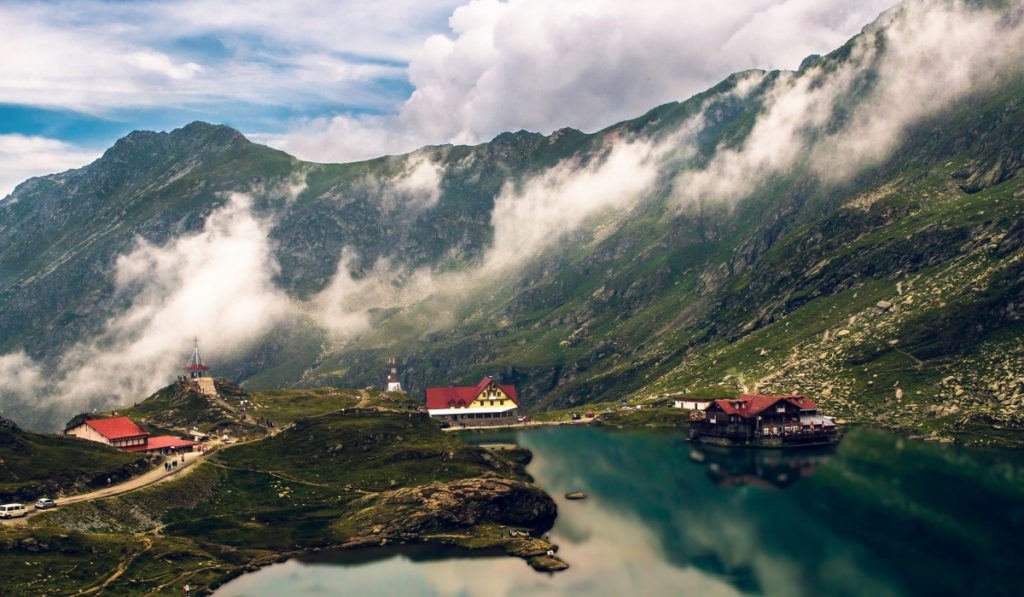
Geography
Transylvania is the largest region in Romania. Transylvania literally means ‘the land beyond the forest’. In addition to its colorful and charming cities, you can expect a great deal of quality time spent in the great outdoors. When planning your visit to Transylvania, be sure to allocate some time to get out in nature.
Transylvania is a plateau that is bordered on two sides by the Carpathian Mountains and on one side by the Apuseni Mountains (Western Carpathians).
For a more detailed geographic description of where Transylvania is located and what regions it includes, check out our post: Where is Transylvania?
Territory Politics
The territory politics of Transylvania are complicated to say the least. Many people wonder if Transylvania is part of Hungary or Romania. The answer, in short, is that it belonged to both countries at different times throughout history.
Today, Transylvania is located in Romania. Prior to World War I, Transylvania belonged to the Hungarian Kingdom and was part of the Austro Hungarian Empire.
Following the world war and the Treaty of Trianon (1920), Hungary was forced to relinquish the territory of Transylvania. Prior to this, Transylvania had been part of the Kingdom of Hungary for centuries.
Many ethnic Hungarians who still live in the region continue to lobby for the region to become an autonomous principality.
You’ll find that most of Transylvania’s population of Hungarians live in Cluj, Miercurea Ciuc, and other towns and villages in Northern Transylvania.
I am getting confused for a Hungarian often these days, since Szilard and I got married and I have a Hungarian name now! Though the confused look I give when someone starts speaking Hungarian to me lets them know I certainly am not, haha!
How to Get to Transylvania
Curious about how to get to Transylvania? Transylvania is equidistant from Bucharest, Budapest, and Belgrade. It’s pretty easy to reach Transylvania from Budapest and Bucharest, but from Belgrade things get a little trickier. You can often find flights from elsewhere in Europe as well, as there are a number of international airports in Transylvania, including in Sibiu and in Cluj.
From Bucharest
Getting to Transylvania from Bucharest is done by plane, train, bus, or car. You can sometimes find cheap flights to Cluj-Napoca. The fastest way is by car. If you’re flying into Bucharest, be sure to tack on a few days to this city in the southern part of the country before or after your trip to Transylvania.
From Budapest
Getting to Transylvania from Budapest is faster than from Bucharest or Belgrade. You can reach Transylvania by train, bus, car, or plane.
From Belgrade
Coming from Belgrade, you have to either take an indirect bus or drive your own vehicle. Train services from Belgrade are unreliable if available at all. Driving takes about 7 hours. It’s a better idea to fly into Bucharest or Budapest.
Best Time to Visit Transylvania
Situated to the west of the Carpathians, the climate on the Transylvanian Plateau is slightly cooler than other locations in Romania. This is due in part to its altitude, which is (on average) 400 meters above sea level.
In short, there is not necessarily a best time to visit Transylvania, as each season has something to offer. It all depends on your personal preferences. Transylvania has four distinct seasons each year. With that, comes unique offerings depending on the time of year you wish to travel to Transylvania.
Spring
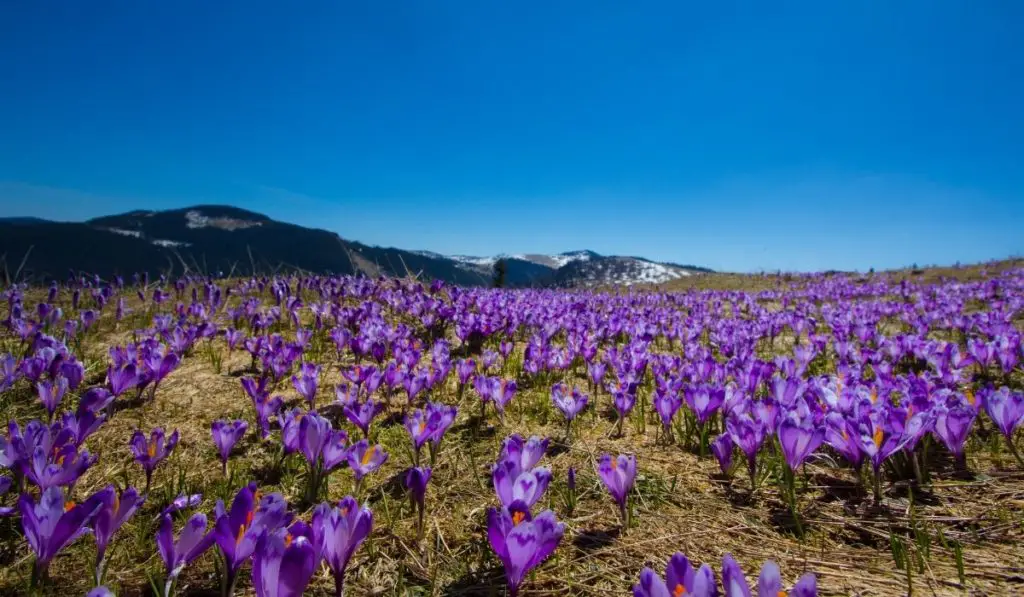
Spring in Transylvania brings bursts of color to a previously brown and dried landscape. The region truly comes alive and is one of the most beautiful places to celebrate spring and new beginnings.
Mărțișor, Women’s Day, and Labor Day are all holidays that Transylvanian citizens look forward to each year. Have a barbecue on Labor day for a bit of Romanian culture!
Summer
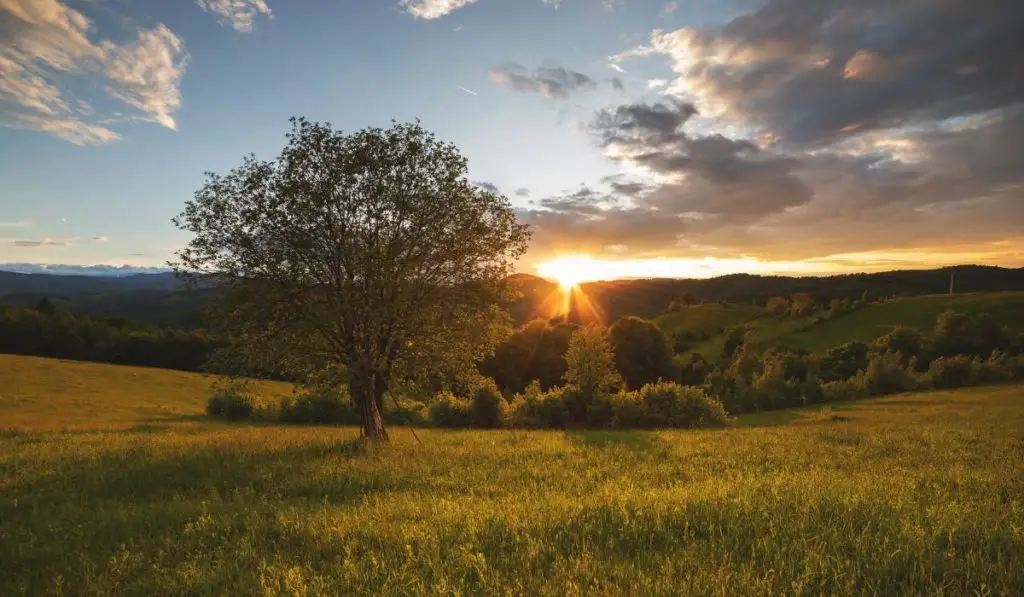
Summer in Transylvania, though hot, is a great time to visit. This is a popular season to visit, particularly among concert-goers and lovers of festivals. Whether it’s the Medieval Festival of Sighisoara, the Film Festival in Sibiu, or Electric Castle in Cluj-Napoca, you’ll find a festival for every interest in Transylvania during the summer.
Head to Lake Tarnița for a quick dip to cool off, if you haven’t already headed to the Black Sea coast.
Autumn
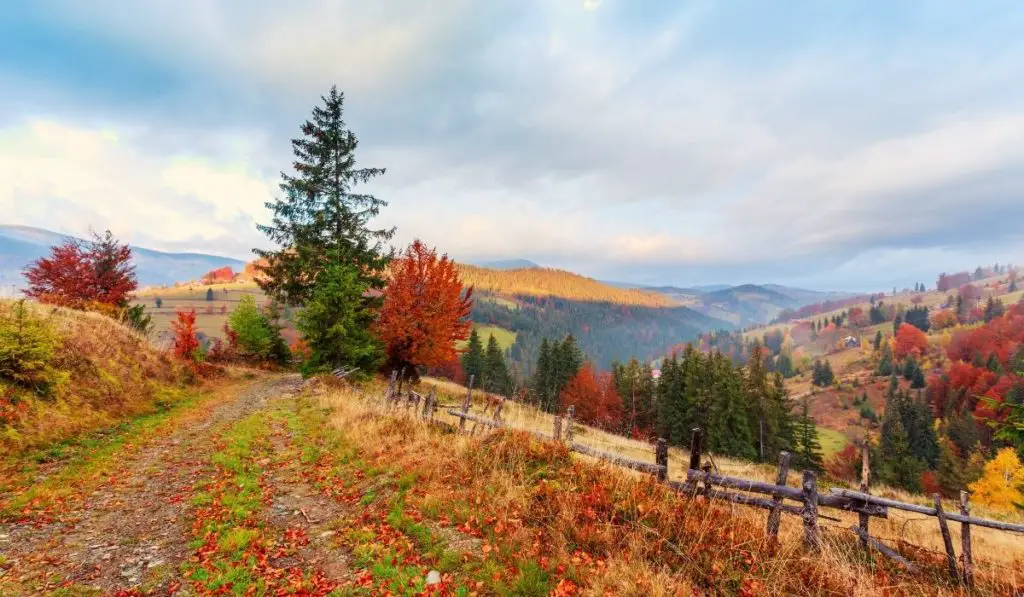
Autumn in Transylvania is stunning. Photographers especially will love to drive through the mountains, stopping at every photo opportunity. They look absolutely magical!
Given the associations with bloodthirsty vampires, Halloween is a great time to visit Bran, where Dracula’s Castle is located just outside Brașov. Though you won’t witness a ritual killing or a vampire killing show, head to the Bran Castle Halloween party, a well organized masquerade party. Bran Castle is the official name of Dracula’s Castle, so you can be sure it’ll be a spooky Halloween.
If you’re into all things Dracula, soup season, and partying at Bran Castle, fall is the best time to visit Transylvania.
Winter
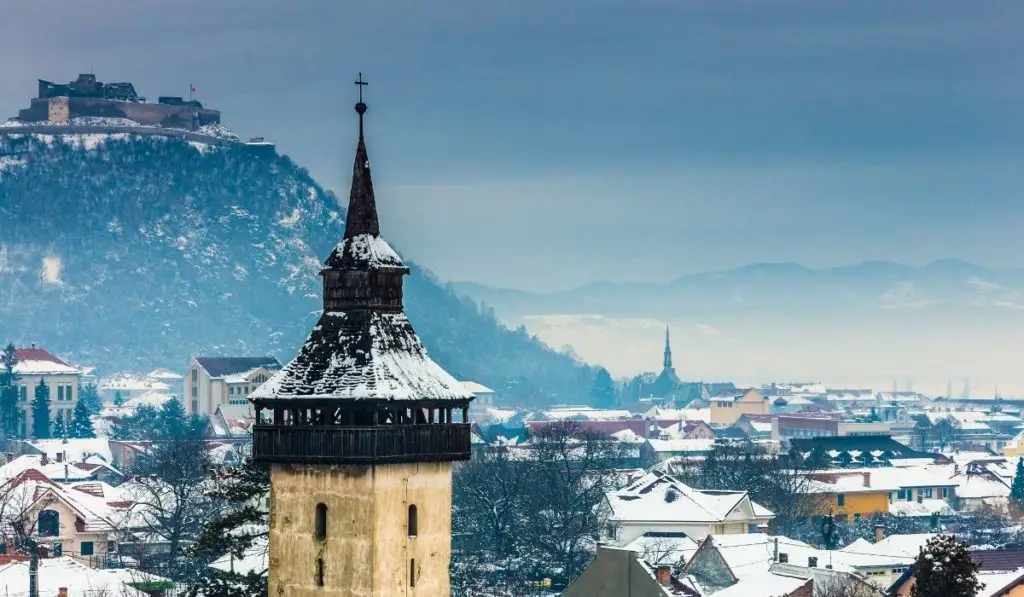
Winter is the best time to visit Transylvania for snow sports enthusiasts or lovers of Christmas Markets! Transylvania is imbued with a sense of magic as the first blanket of fresh snow covers the ground, particularly in the mountains. There are a ton of snow resort areas to go skiing or snowboarding, or take the little ones tubing.
Sibiu is known to have one of the most magical Christmas markets in all of Europe, but Brașov and Timișoara both have Christmas markets worth visiting.
For some excellent photo opps, consider heading into the mountains to the village of Mărișel. It’s an easy day trip from Cluj-Napoca or even Alba Iulia, where you can take a horse-drawn carriage through the snow.
Language in Transylvania
Romanian
Considering the fact that Transylvania is in Romania, you shouldn’t be surprised to learn that Romanian is the official and most widely spoken language in the region. A few key Romanian phrases will go a long way if you take the time to learn them.
Though, I’ll warn you – despite being a Romance language, the Romanian language has proven to be very difficult for me. Both in terms of pronunciation and grammar. Godspeed!
Hungarian
Although I say that Romanian is a difficult language to learn, Hungarian is one of the most difficult languages in the world. But it is widely spoken in Transylvania, particularly in the northwest, where the region shares a border with Hungary.
In some small villages, you may not hear any Romanian at all, as these villages are predominantly ethnic Hungarian.
Currency in Transylvania
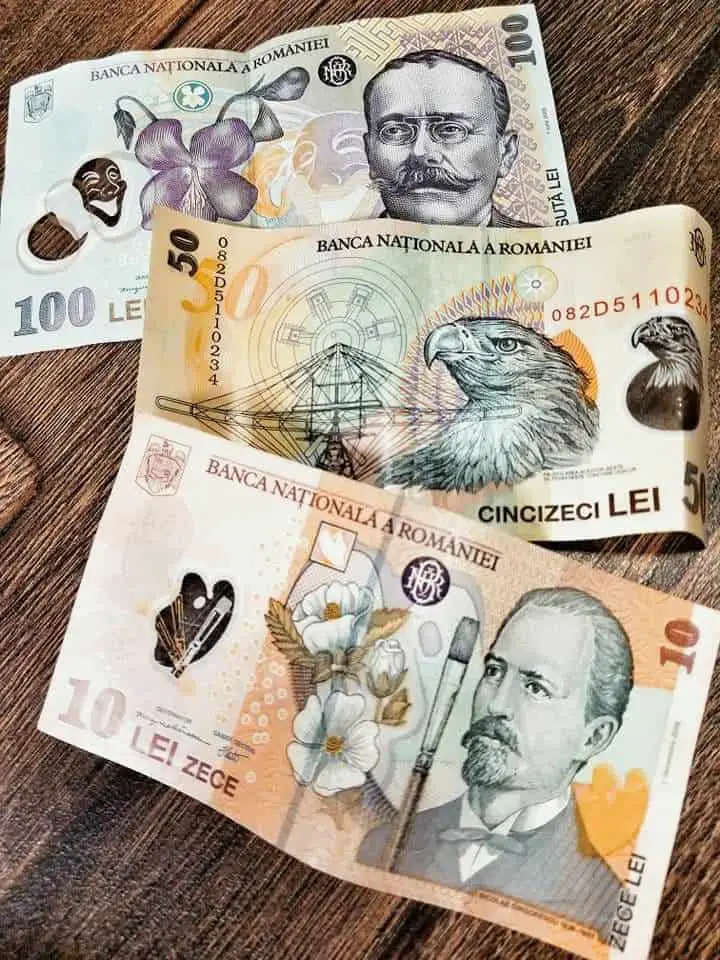
Lei
The main currency in Transylvania is the leu (plural lei) which is translated as ‘lion’ in Romanian. The bills themselves are made of plastic (perfect in case you forget money in your pocket when doing laundry) and consist of different sizes and colors.
Euro
Romania is not part of the EuroZone, so you won’t find many places that accept Euro as currency (if any, at all). The only time that we use Euro in Romania is for large purchases, like rent, cars, or property.
Schengen Status
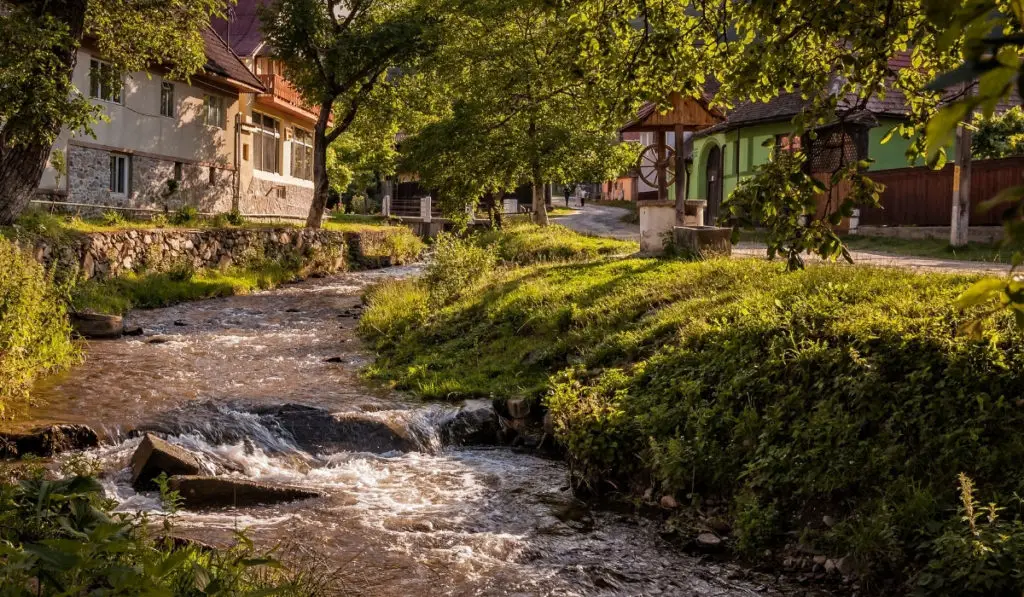
Although there have been ongoing talks for years about Romania joining the Schengen zone, it is not included yet. This can be a good or a bad thing, when you consider it. Traveling to Transylvania from outside the EU usually means that you can stay in Romania for 90 days without a visa out of a period of 180 days (this is true for Americans – please consult with your local embassy or consulate for visa requirements from your country).
This is great for people who are spending a lot of time in Europe and need to get out of the Schengen zone for visa reasons.
For me, who lives in Transylvania, I’d love Romania to join Schengen as quickly as possible so that my husband no longer needs a visa to travel to the United States! That’s right – even though Americans do not need a visa to travel to Romania, Romanians need a visa to travel to the USA.
Romanian vs. Roma
When I lived in Italy, I would frequently hear Italians talking about the gypsies from Romania. I (incorrectly) assumed they were talking about Romanians (I think they believed this too). But this is not the case. They were talking about Roma people, which is an entirely different ethnicity.
Unfortunately the Roma people have a bad reputation in Romania and abroad for stealing things and living in squalid conditions.
Electricity & Outlets
In Romania the plugs and sockets are type F. The normal voltage is 230 V and the normal frequency is 50 Hz.
You can pack an adapter, but I’d recommend actually purchasing a phone charger from an Orange store in Romania. They’re cheap (around $15 USD) and you won’t have to worry about slow charging due to a poor adapter.
Plus, now you have a phone charger to bring to other European countries as well.
Getting Around Transylvania
Transylvania is about the size of New England. It seems much larger once you’re here! It takes forever to get anywhere by train as the Romanian rail system is painfully slow. I swear, I could run faster.
Public transport within cities is usually reliable and easy to navigate. In smaller towns, you may have to hitch a ride with a local! It’s a normal part of the culture here.
Taxi & Uber
Uber is not as prevalent in Romania as in the States, but they do have Bolt. In general, Bolt is typically cheaper than taking a taxi (and their drivers are a bit friendlier, too). Taxi drivers in Transylvania might see you are a tourist and take you on a roundabout way to get where you’re going for a few extra lei.
I had this experience once in a taxi with Szilard. We were speaking English and all of a sudden Szilard started yelling at the driver. It was obvious the driver was taking us out of the way of our destination because he thought we were tourists.
Download the Bolt app and you won’t have to worry about this, since the route is predetermined by the app.
Public Transportation
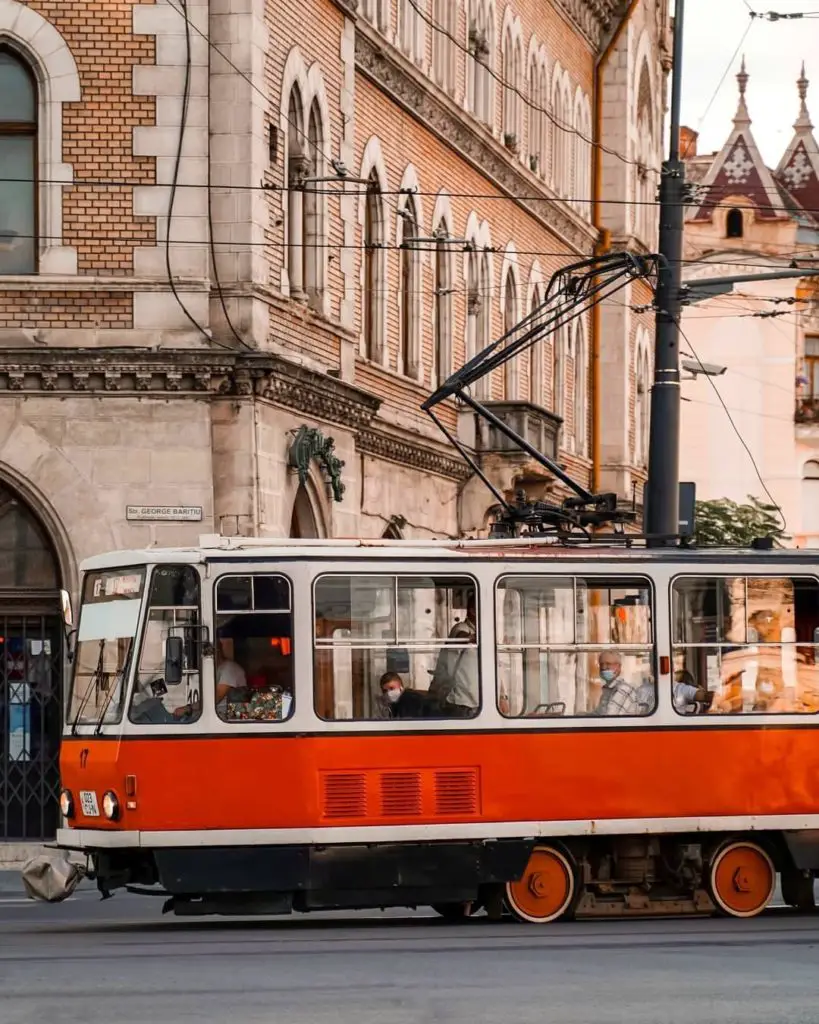
As I mentioned above, public transportation, particularly trains, tends to be very slow in Romania. A train to Budapest takes over 7 hours, while the drive will only take you 5, for example.
Night trains are a good option if you’re going somewhere far or to other regions of the country.
Buses are faster than trains but they tend to be unreliable if you’re going between cities or towns.
Driving in Romania
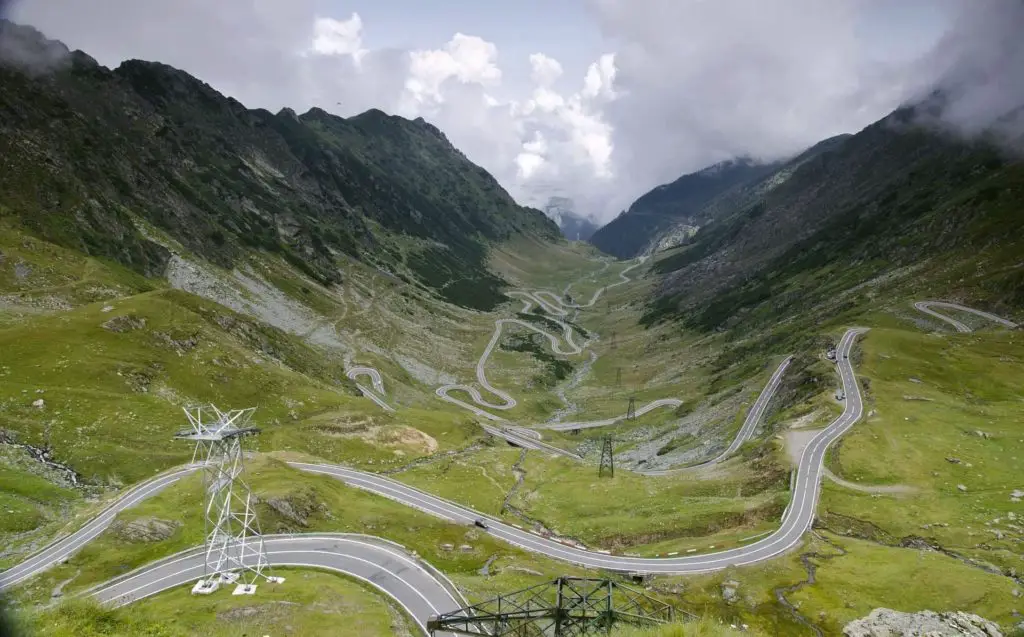
Romania has one of the highest fatality rates due to car accidents in all of Europe. The drivers here are literally scary. They drive like maniacs due in part to the fact that the infrastructure here is sorely lacking. There are only a few highways throughout the whole country!
So, when you’re driving between big cities or small towns and there’s only a one lane road going through villages, and maybe you’re stuck behind a semi, you can understand the frustration and why they tend to drive like savages.
Driving in Romania is not for the faint of heart. Rent a car at your own risk. I avoid driving at all costs, and usually only take the car to the market or the mall once a week.
UNESCO World Heritage Sites in Transylvania
If you’re looking to visit a UNESCO World Heritage Site or two while you’re in Transylvania, you’re in luck. There are quite a few in the region, all important components of the local culture and great travel inspiration.
We’ve included the official ones as well as a few that are on the tentative list (but still worth a stop!).
Fortified Churches of Transylvania
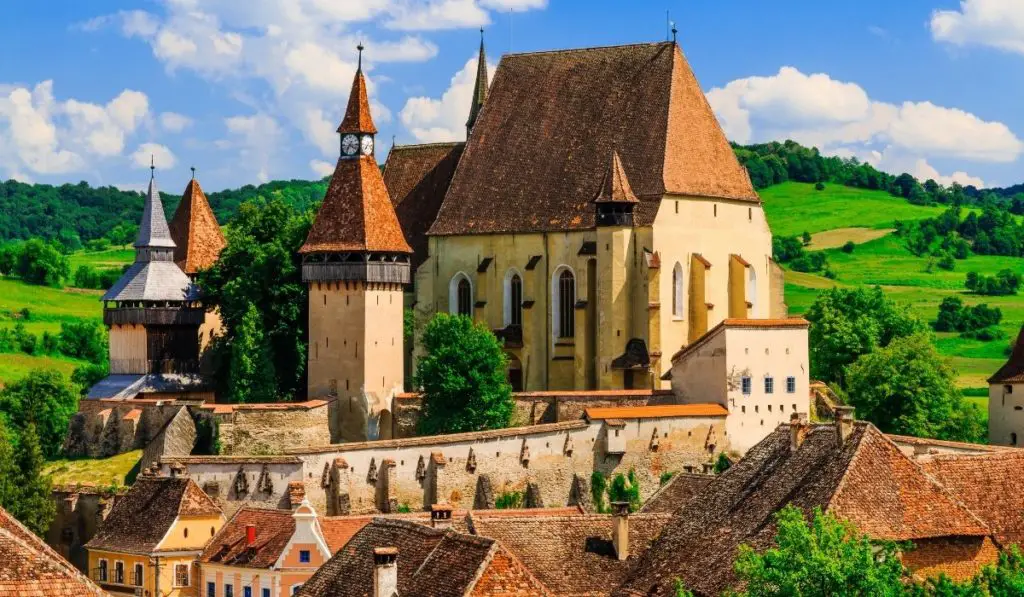
The Fortified Churches of Transylvania are probably one of the most popular UNESCO sites in Romania. Transylvania has hundreds of fortified churches, but only seven of them made the cut to be included as UNESCO sites. They are scattered throughout the region.
If you want to see most of them, basing yourself in Sibiu is probably the most convenient way to do so. Read up on the history of these magnificent churches before visiting to truly appreciate them!
Rimetea Village
The village of Rimetea is a Hungarian village located in Alba county. It’s one of the most beautiful villages in the entire country, with a predominantly Hungarian speaking population. There isn’t much to do here aside from admire the scenery and try some delicious food, but it’s still worthy of a visit!
Historic Center of Sighişoara
Sighişoara is among the most beautiful and most visited places in Transylvania. It’s home to a wonderful Medieval festival, Vlad Dracula’s birthplace, and the Sighisoara Citadel. The walled Old Town is beautifully preserved and a great option for a day trip from either Cluj-Napoca or Sibiu.
Be sure to take some photographs of the epic clock tower in this medieval city. The clock tower is among the most beautiful parts of Sighişoara.
Insider Tip: For the best food, check out Cafe Martini in Piata Hermann Oberth. Since moving to Sighisoara, it’s become our favorite!
Dacian Fortress of the Orastie Mountains
This incredible ancient site goes back to the times of the Roman Empire and the Roman-Dacian wars. Sarmizegetusa Regia is sometimes called the ‘Romanian Stonehenge’ and it’s easy to see why. It evokes a somewhat eerie vibe as you imagine yourself traveling back in time to the days of the Dacians.
Historic Center of Sibiu
Sibiu is the first city I ever visited in Romania. I lived there for the duration of the 2020 lockdown and it is by far my favorite place in Transylvania (in all of Romania, for that matter). Sibiu was a German-Saxon city that still retains a bit of Germanic influence.
Sibiu was the European Capital of Culture at one point and it’s easy to see why. The historic center is the most beautiful I’ve seen, right on par with Sighișoara.
Get lost in the cobblestone streets, check out the Bridge of Lies, or take some day trips to the fortified churches and beyond. There are a ton of things to do in Sibiu.
Wooden Churches of Maramureş
Though sometimes not included in the definition of ‘Transylvania proper’, the wooden churches of Maramureş are one of the most popular historical sites to visit in the country. Maramureş itself is stunningly beautiful, nestled along the Ukrainian border.
Be sure to visit Breb for a taste of what life is like in these remote villages.
Roșia Montană Mining Landscape
In part of the Apuseni Mountains lies Roșia Montană, a small village that’s home to an incredibly complex gold mining operation. There are over 7km of gold galleries and multiple water wheels in four different locations underground.
The site is included on the UNESCO World Heritage Site list for its incredibly advanced technology that was used in the ancient times and the Roman occupation of Dacia.
Historic Center of Alba Iulia
Alba Iulia is known for its epic citadel. It’s humongous, and very beautiful. The citadel in Alba Iulia is a lesser known site in comparison to Bran Castle or Sighisoara, and only a handful of visitors ever make their way to Alba Iulia. It’s totally worth spending a day here, though, and exploring the citadel and the surrounding gardens.
Sometimes there are markets held inside the citadel, selling mici and other snacks, handmade crafts, and authentic souvenirs to bring home.
Dracula’s Transylvania
The Legend & Inspiration
Virtually everyone in the world associates Transylvania with Dracula and vampires. But where did this rumor start? Legend has it that Bram Stoker’s Dracula drew its inspiration from Vlad Tepes, a Wallachian prince who was rumored to have impaled prisoners he captured from Saxon cities.
Sometimes referred to as Vlad the Impaler, he is considered a national hero and an integral part of Romanian culture.
Though history tells us that Vlad the Impaler never actually lived in Bran Castle, he was rumored to have been imprisoned there before his death. The history of Bran Castle remains shrouded in mystery, which only adds to its mystery.
Sometimes you will also hear Vlad Tepes referred to as Vlad Dracula, as his surname was Dracul. Bram Stoker’s Dracula remains a forerunner of novels about the living dead, even with bestsellers like Twilight and other teen vampire books.
Transylvanian Food & Drink
How to Drink Tuica
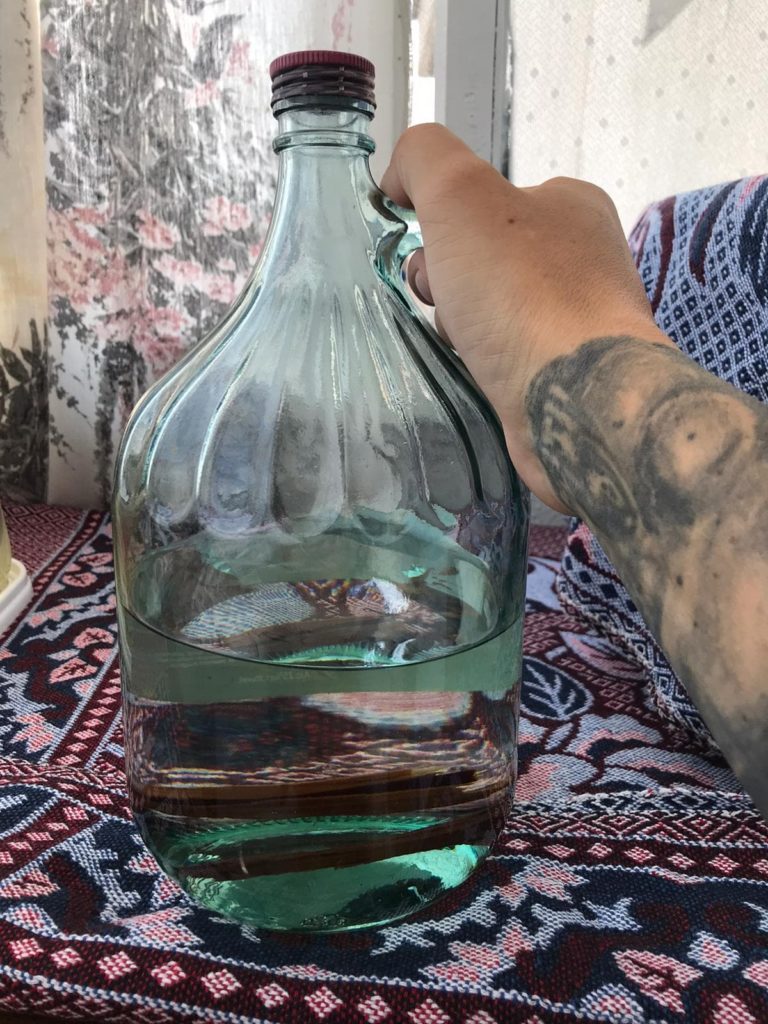
Țuică is an incredibly strong local spirit made from fruits such as apples, plums, apricots, or peaches. Sometimes referred to as pălincă, it has the ability to ‘transform you’, as my husband likes to say. This is in reference to the fact that it can turn a normal, fun person into an angry savage, kind of similar to the effects of tequila on some people.
When someone offers you pălincă in a shot glass, proper protocol is to sip it, not shoot it. I personally think it tastes disgusting, and unfortunately it ‘transforms’ me, so I tend to stay away.
Best Things to Eat in Transylvania
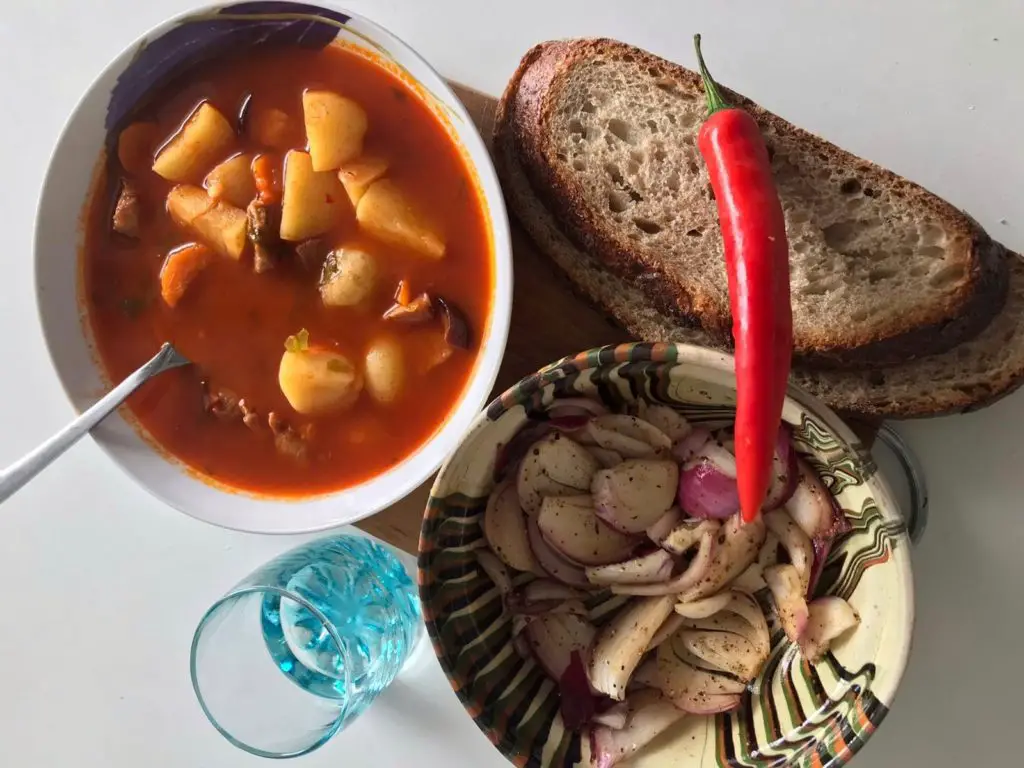
Transylvania is home to some delicious traditional Hungarian and Romanian food. Some influence is also seen from the Ottoman Empire and Habsburg Empire.
A few dishes that are considered traditional Romanian are actually Turkish in nature, such as sarmale, stuffed cabbage rolls. Other popular foods to try include mici (uncased sausages), ciorbă de burta (belly soup), and papanasi (fried donuts covered in fruit jam and sour cream).
Safety in Transylvania
Overall, Transylvania is a very safe place. As a woman, I never feel unsafe or uncomfortable going out alone at night. Of course, you should always keep your wits about you and follow your instincts if someone or something is making you feel uncomfortable.
Read up on individual cities you might visit and what the different neighborhoods are like to avoid going to the ‘bad part’ of town.
Use common sense and you will be fine!
Best Cities to Visit in Transylvania
There are a number of major cities and medieval towns to visit throughout the historical region of Transylvania.
My personal favorite is by far Sibiu! It’s the most beautiful, in my opinion.
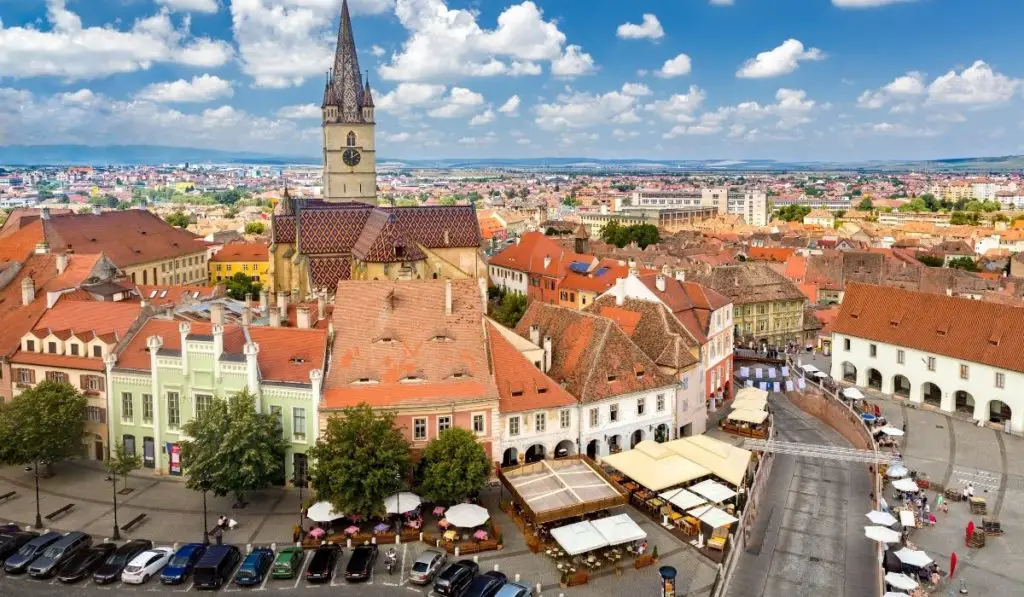
From Brasov, another beautiful German-Saxon influenced city, you can easily visit Bran Castle.
Cluj-Napoca is the largest city in the region, with a thriving student population and the best nightlife. From Cluj, you should take a day trip to Turda Salt Mine.
The Turda Salt Mine is like an underground amusement park, it’s pretty interesting! There is another salt mine in Praid. Other popular cities in Transylvania to visit include Timisoara and Oradea.
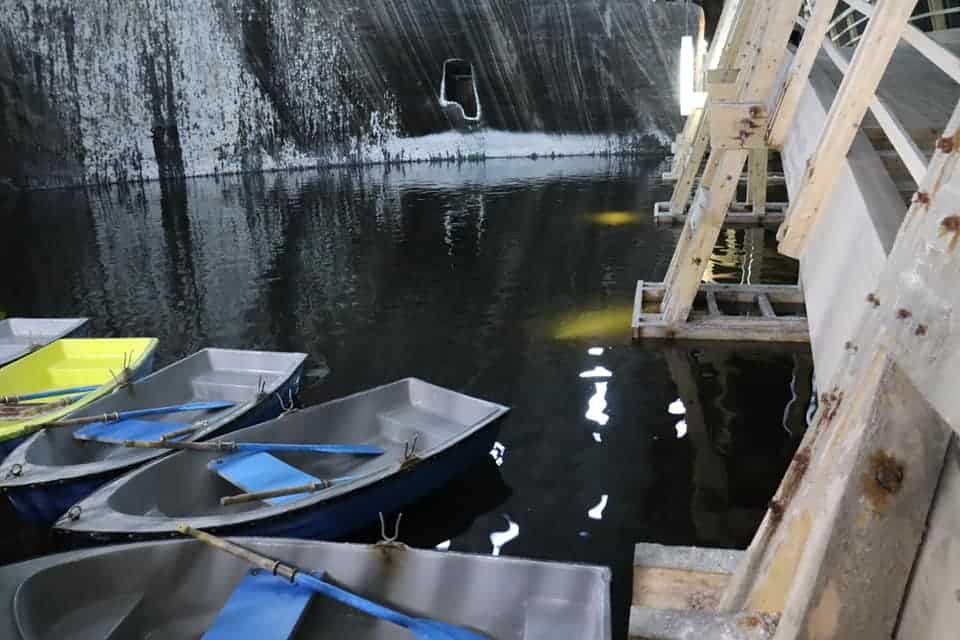
Most of the cities in Transylvania are very beautiful, though you can still see some (ugly) bloc apartments from the communist period.
Helpful Information
Be Prepared to Talk Money
I’ve never been asked so often or by so many people how much money I make! While in the USA it’s considered taboo or in poor taste to ask about someone’s income, it’s pretty common in Transylvania and Romania in general.
People here are very open about their salaries! Don’t be shy, just make like a local and be prepared to discuss it.
…and Politics
This is mostly true of taxi and Bolt drivers I’ve encountered. They all seem interested in American politics. They’ve always got something to say about Donald Trump or Joe Biden! It’s a bit amusing, but can get old fast.
BYO Tampons
Ladies, I don’t know who needs to hear this, but if you use tampons, bring your own to Romania. While they do have tampons, they don’t have applicators, which can be uncomfortable to say the least.
Bear Protection
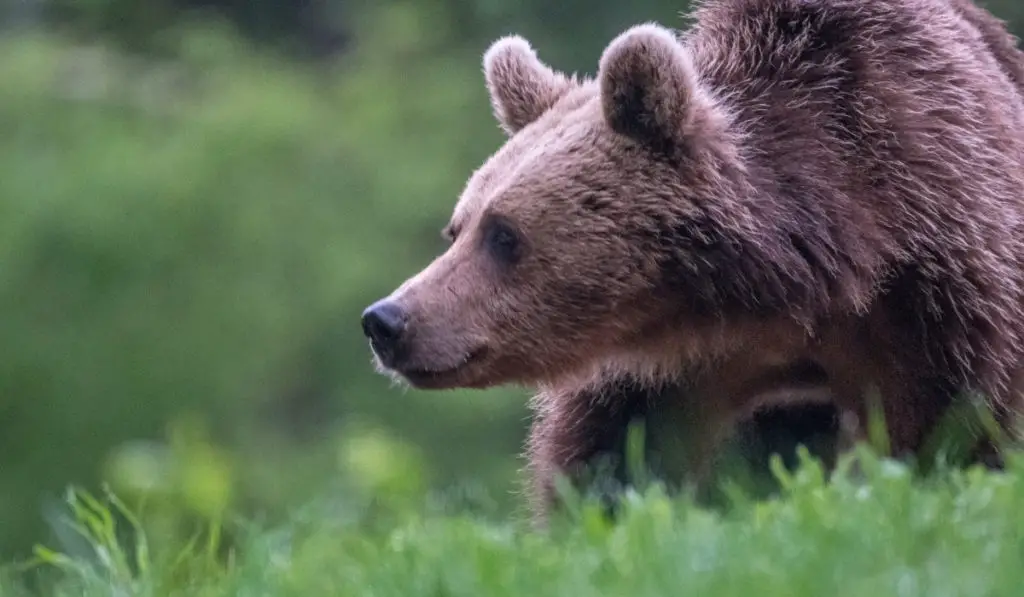
Before you travel to Transylvania, you may want to read up on ways to prevent an attack from the region’s many brown bears! Bears are very prevalent in the Carpathian Mountains, the Bucegi Mountains, the Apuseni Mountains, and all the other mountain ranges that Romania is known for.
Don’t feed the bears if you do encounter them, particularly the friendly cubs.
Castles
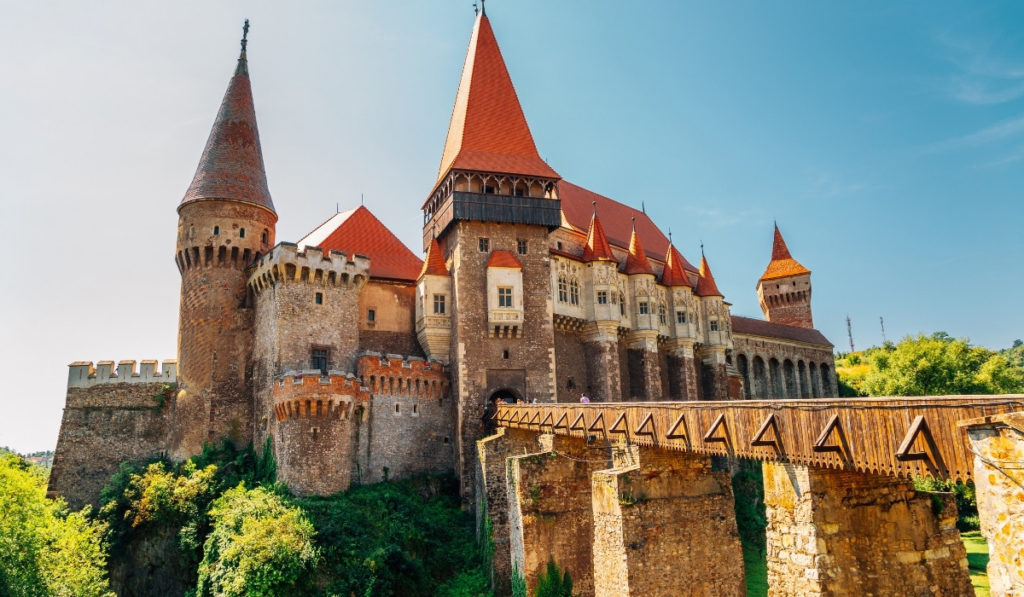
There are a ton of stunning castles throughout the historical region of Transylvania. Of course, you must visit Bran Castle (Dracula’s Castle). There is also Peles Castle, Corvin Castle (aka Hunyadi Castle), Rasnov Fortress, and more.
Peles Castle is technically between Wallachia and Transylvania, but it’s close enough that you can certainly stop there for a visit. Corvin Castle is a must in Hunedoara.
The castles in Transylvania are truly stunning, definitely worth visiting. Some are nestled in the mountains and forest, so be sure to take advantage of the surrounding natural beauty.
Things to Know Before Traveling to Transylvania: FAQs
Where is Transylvania located?
Transylvania is located in central Romania, surrounded by the Carpathian Mountains. It’s a historical region that has been known for centuries, not just for its ties to the Dracula legend, but also for its scenic beauty and unique culture.
Is Transylvania safe?
Yes, Transylvania is generally safe for tourists. Like any other destination, it’s essential to be aware of your surroundings and exercise common sense. Crime rates are relatively low, but always take standard travel precautions.
Is Transylvania a country?
No, Transylvania is not a separate country. It’s a historical region within the country of Romania. Many people associate it with its distinct culture and folklore, but politically and administratively, it’s part of Romania.
Is Transylvania in Romania?
Yes, Transylvania is a region located in the central part of the country, in one of the most beautiful parts of Romania. While it has its own unique cultural and historical identity, it remains an integral part of Romania. However, this hasn’t always been the case – in fact, there is a lot of controversy to this day over whether Transylvania should belong to Romania or Hungary.
Is Transylvania a real place?
Absolutely! While it’s often associated with mythical creatures like vampires, thanks to tales like Dracula, Transylvania is a genuine and historically rich region in Romania. It boasts stunning landscapes, medieval castles, and vibrant cities.
Is Transylvania Worth Visiting?
Definitely! Transylvania offers a mix of history, architecture, natural beauty, and unique cultural experiences. From the captivating Bran Castle, often associated with the Dracula legend, to the charming streets of Sibiu and Cluj-Napoca, there’s something for every traveler. Its blend of Gothic tales and authentic Romanian culture makes it a must-visit destination.

